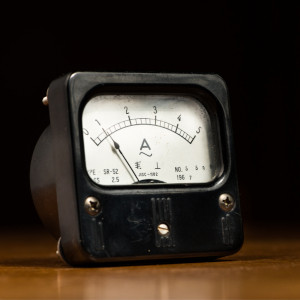
When electrical charge carriers move, this is called an electric current. The charge carriers can be ions in a liquid or gas or electrons moving freely in metals.
Even in a vacuum, electrons or ions can move and thus form an electric current.
In practice and in theory, three different directions of current can be distinguished:
- The technical direction of current was determined from the positive pole to the negative pole. When this determination was made, nothing was known about the movement of free electrons.
- The electron flow direction is from the negative pole to the positive pole, i.e. opposite to the technical flow direction.
- The direction of ion flow depends on the charge of the ions, cations flow to the cathode, anions to the anode.
The current strength is higher the more free electrons flow through the cross-section of the conductor per second.
The electric current is abbreviated to "i" in calculations, the unit is amperes or "A" for short.
The current strength can be calculated by dividing the power by the voltage, i.e.:
Ampere=Watt/Volt
